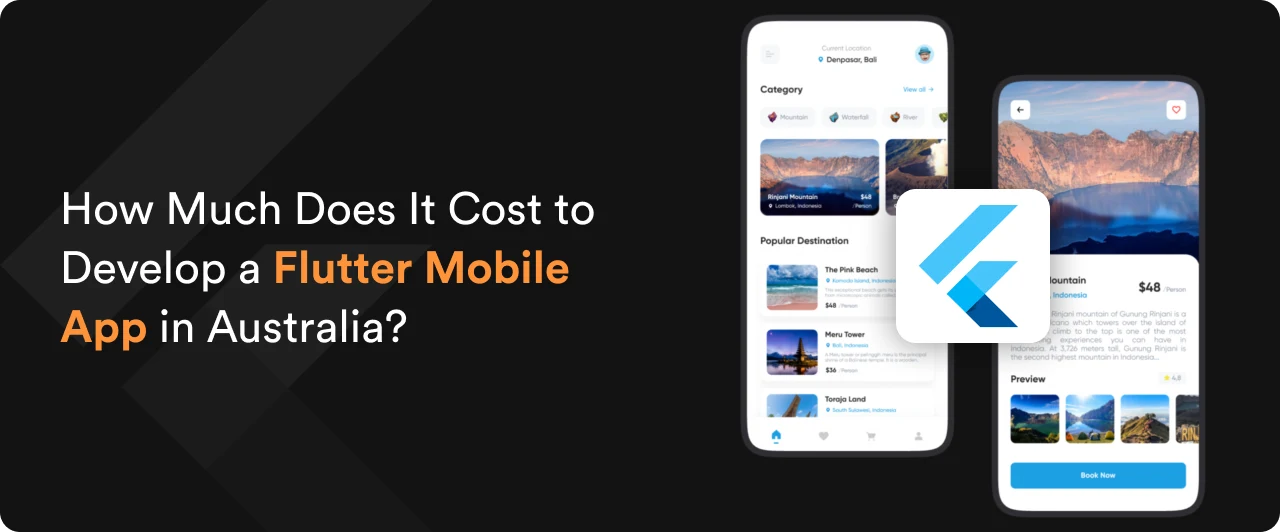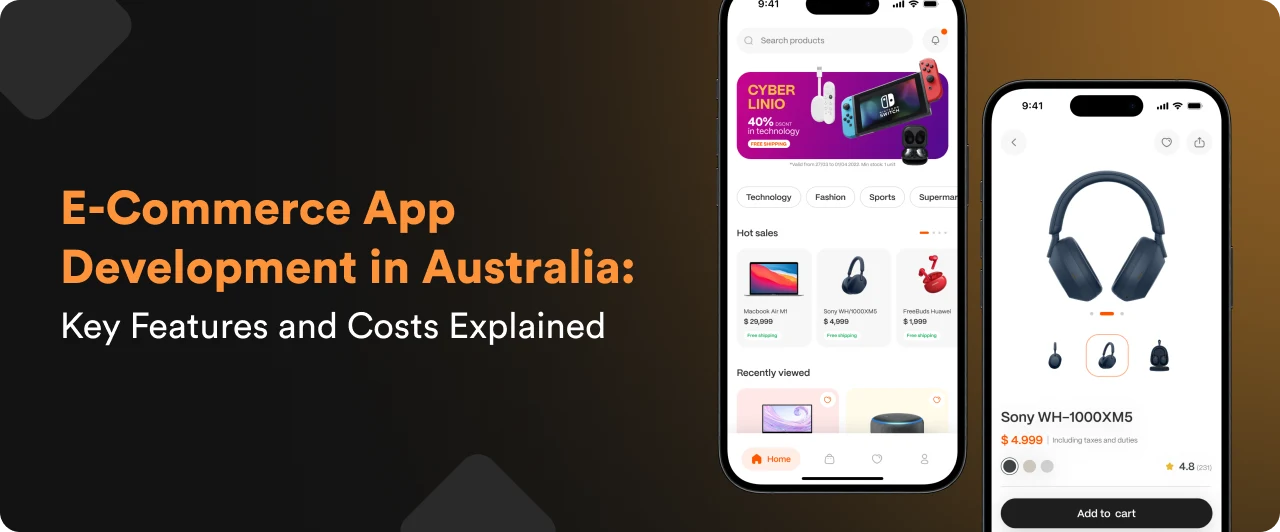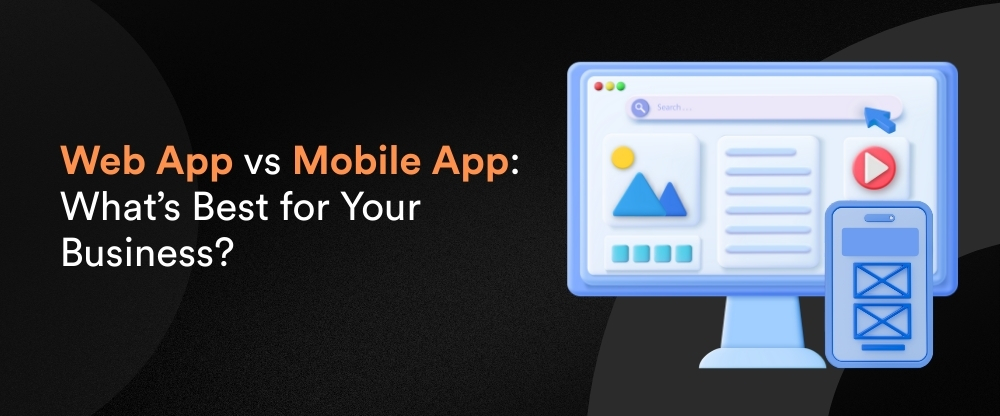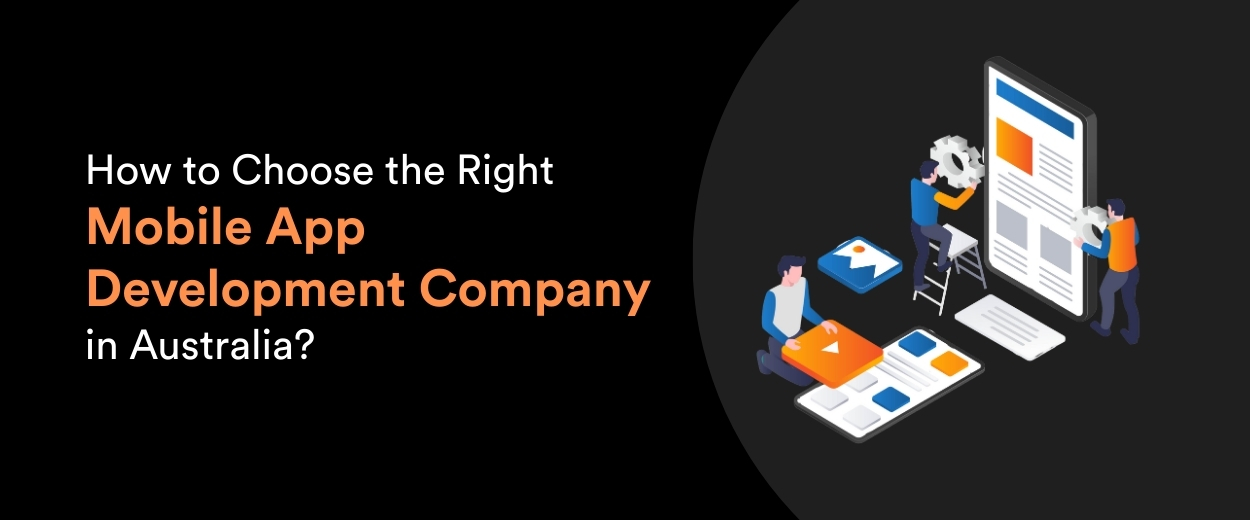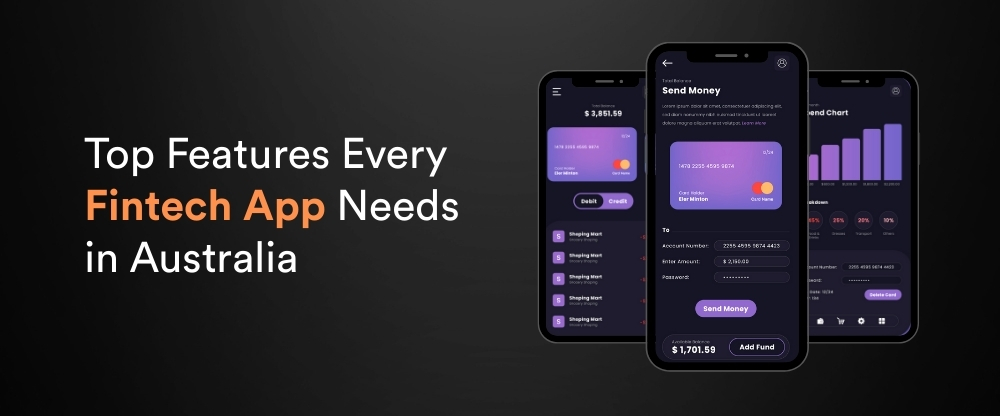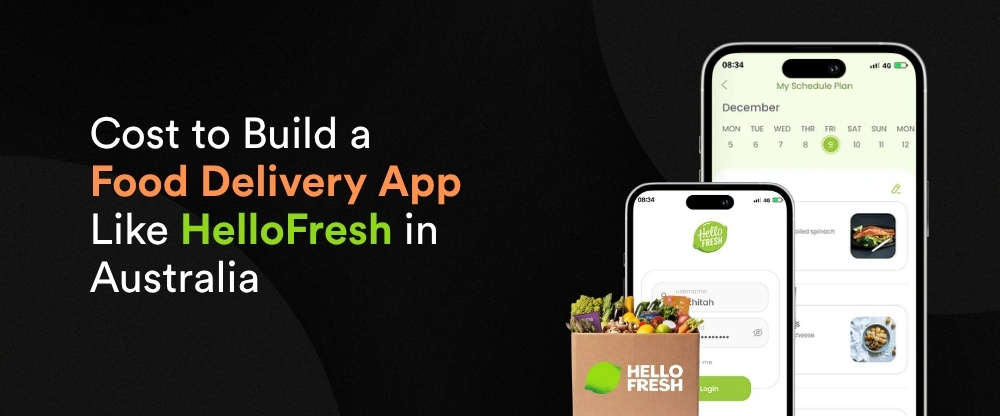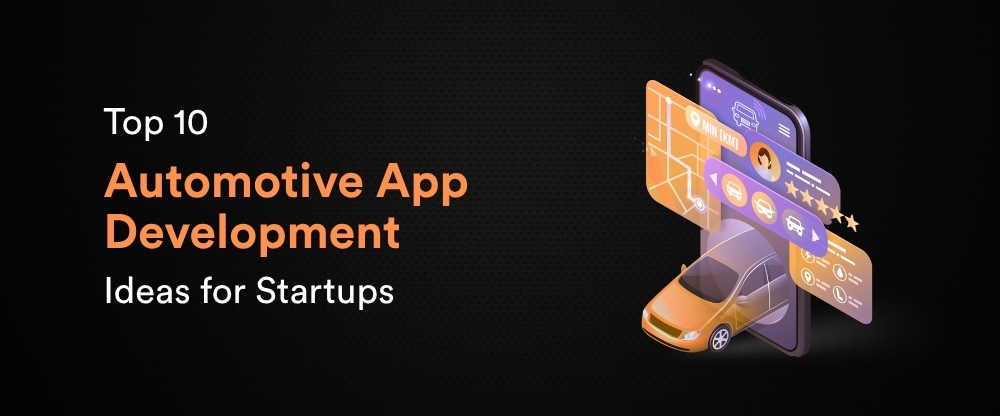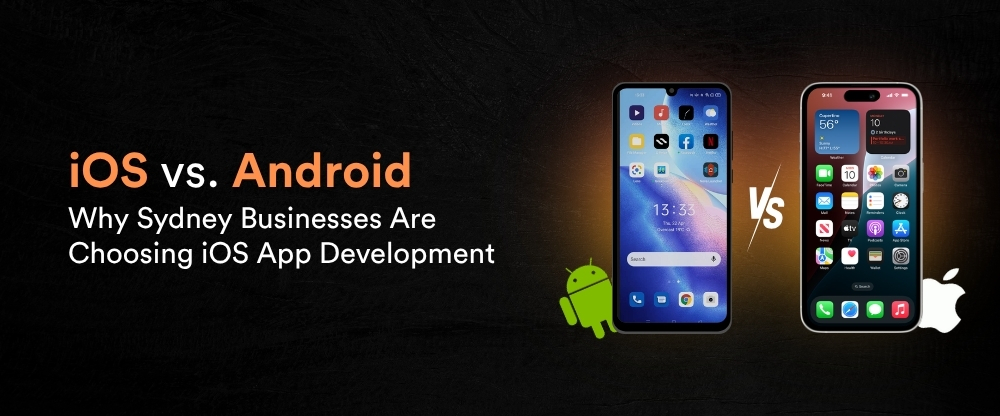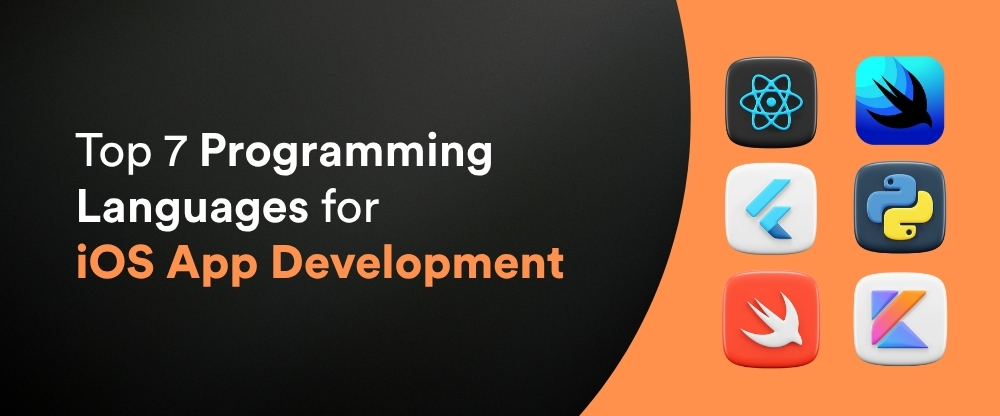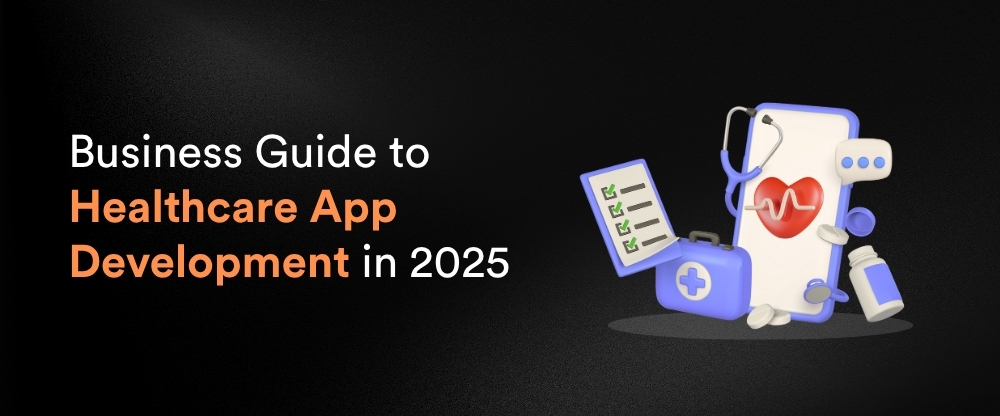
Healthcare apps are not only a fashionable technology, but they are also becoming a part and parcel of Australian businesses. Be it a clinic in Bondi or a chain of pharmacies in New South Wales, the right app can change the way you communicate with your patients and improve the efficiency of your work.
Intelligent companies are collaborating with a reliable mobile application development company to develop solutions. These are not only beneficial to the patient in terms of outcomes, but also increase their bottom line.
Understanding Healthcare App Development in Australia
Here’s the thing—healthcare apps aren’t your run-of-the-mill business tools that you can cobble together over a weekend with some coding tutorials. They’re dealing with people’s most sensitive information, navigating a maze of regulations that’d make a tax lawyer’s head spin, and somehow need to play nice with medical systems that were probably last updated when John Howard was PM.
Types of Healthcare Apps Dominating the Market
Here are the main categories seeing massive growth:
- Telemedicine systems – Online visits and distant surveillance
- Mental health apps – Therapy, meditation and wellness tracking
- Chronic disease management – Diabetes, heart conditions and medication reminders
- Fitness and nutrition monitors – Tied to the systems of healthcare providers
- Appointment booking systems – Streamlining clinic operations
The Business Case for Healthcare Apps
Let’s talk turkey, healthcare apps aren’t just some fancy tech expense that’ll gather digital dust. Smart Aussie business owners are seeing genuine returns faster than a Bondi lifeguard can spot a rip. We’re talking 12-18 months to recoup your investment, and that’s being conservative.
Key Benefits for Australian Businesses
- Better patient retention – Apps make patients sticky, and they keep returning.
- Operational efficiency – Bookings and reminders are automated and decrease the number of administrative tasks.
- Data insights – More knowledge of patient tendencies and preferences
- Competitive advantage – Stand out in crowded healthcare markets.
- Revenue growth – New service offerings and improved patient throughput.
Planning Your Healthcare App Development Journey
Before you start getting all excited about bells and whistles, take a step back and ask yourself one simple question: what bloody problem are you solving? Are you sick of patients ghosting their appointments? Fed up with medication mix-ups? Tired of your waiting room looking like a scene from a zombie apocalypse because everyone’s queuing for hours?
The apps that smash it in the healthcare space are the ones that solve one specific headache brilliantly. They don’t try to be the Swiss Army knife of healthcare; they’re more like that one perfect tool that does exactly what you need, when you need it.
What Top Healthcare Apps Get Right?
Have you ever wished to know what features really move the needle as opposed to what sounds cool at dinner parties? The ugly truth is that it cost me thousands and months of development time to figure out the breakdown.
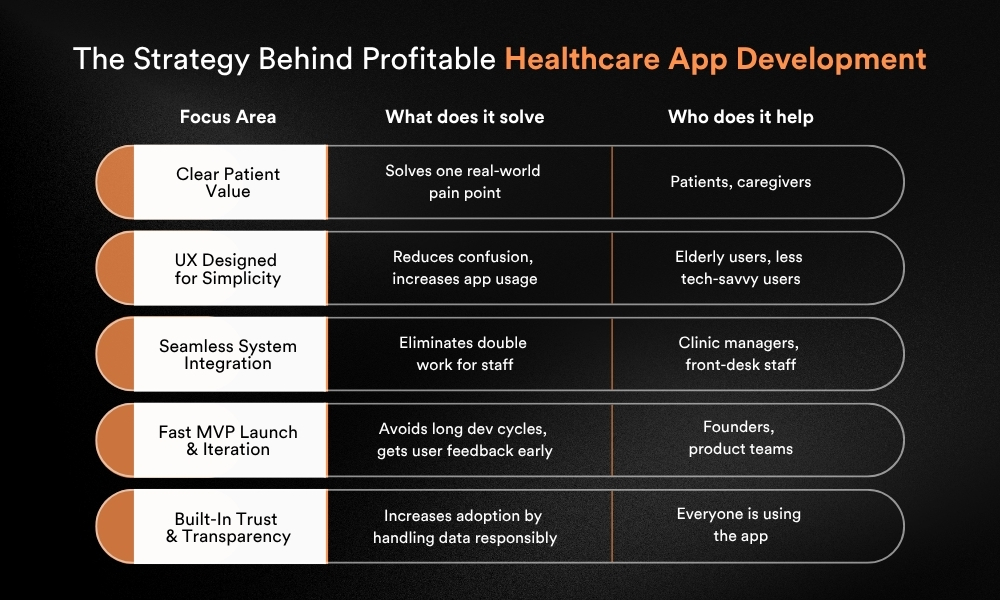
Choosing the Right Development Approach
See, the decision between native and cross-platform development is the same as a custom-made utility vehicle or a mass-produced sedan. Both will take you to point B, but the latter will perform far better on the rough terrain, particularly when you are dealing with delicate health data that requires Fort Knox security.
Healthcare stands by native iOS and Android applications. They are more robust, quicker, and will not have you hanging in the lurch when you need to integrate with the advanced medical systems.
Development Timeline and Milestones
Most healthcare apps take 4-8 months from concept to App Store approval. That is what such a journey generally looks like:
- Discovery and Planning (2-4 weeks) – Technical architecture and requirements gathering
- Prototyping and Design (3-4 weeks) – User experience design and user interface testing.
- Development and Integration (12-20 weeks) – Third-party integration and core functionality.
- Testing and compliance (4-6 weeks) – Security audits and regulatory compliance checks.
- Deployment and launch (2-3 weeks) – App store submission and go-live support.
Navigating Compliance and Security Requirements
Right, let me get the elephant in the room out of the way, compliance. Australian Digital Health Agency guidelines and the Privacy Act 1988 are not mere recommendations that you can conveniently ignore, such as a pesky telemarketer.
Patient data security isn’t just a nice-to-have feature you can add later. It’s the foundation everything else is built. Get this wrong, and you’ll be dealing with more than just unhappy customers—you’ll be facing legal headaches that’ll make a root canal seem pleasant.
Essential Security Features
Your app architecture must include:
- End-to-end encryption for all patient communications
- Multi-factor authentication for healthcare provider access
- Audit trails track all data access and modifications
- Automatic session timeouts prevent unauthorised access
- Secure backup systems ensure data availability without compromising security
Real-World Success Stories from Sydney
Sydney Children's Hospital Network
The Sydney Children’s Hospital created a custom patient portal, which decreased missed appointments by 35% in six months. Parents can receive test results, schedule appointments, and connect directly with the care team of their child in a secure iOS app.
What is it that made this a success? They stuck to addressing a single significant pain area, the communication process between busy parents and the medical staff. The app is not intended to substitute face-to-face care; on the contrary, it complements it.
Bondi Junction Dental Practice
The dental practice of Dr. Sarah Chen collaborated with a mobile applications development in Sydney to develop an app that provides appointment reminders, provides the convenience of rescheduling, and comes with post-treatment care guidelines. The patient satisfaction scores went up by 25% and referrals to the practice went up by 20%.
The key insight? Patients appreciated having all their dental information in one convenient place, accessible anytime from their phone.
Budgeting for Healthcare App Development
The cost of developing healthcare apps is very different depending on complexity and features. Basic appointment booking applications may begin at AUD30,000, and full-stack telehealth platforms may cost more than AUD150,000.
The only actual cost factor is not initial development. The maintenance, security updates and feature additions are what make your app competitive and compliant.
Hidden Costs to Factor In
- Ongoing security updates – Healthcare regulations evolve constantly
- Third-party integrations – API fees for payment processing and medical databases
- App store fees – Annual developer program memberships and transaction fees
- Marketing and user acquisition – Getting your app discovered and downloaded
- Customer support – Helping users navigate technical issues
🎧 Podcast: Building Healthcare Apps That Actually Work in 2025

Not in the mood to read? Tune in as we dive into the real costs, compliance essentials, and smart features behind successful healthcare apps.
Get insider tips and learn how to turn your idea into a trusted, patient-focused app that drives real results for your business.
Conclusion
The purpose of healthcare app development is not only to meet the trends but to create value for patients and develop a stronger and more efficient business. Today, Australian healthcare providers who adopt a mobile solution will have a great competitive advantage in the future.
The trick is to begin with well-considered goals, select well-qualified development partners, and make compliance primary in the initial phases. With a correct approach, healthcare applications would be a potent business tool to improve patient outcomes and promote sustainable growth. You can think about collaborating with reliable mobile app development services to make your vision of a healthcare app come true.
Don’t let your competitors get ahead while you’re still thinking about it. Our healthcare app development specialists have helped dozens of Australian businesses launch successful apps that genuinely improve patient care and increase revenue. Book your free strategy session today.
Frequently Asked Questions (FAQs)
The development of most healthcare apps takes 4-8 months between the idea and the App Store. This encompasses checks on compliance, security audits, and complete testing that healthcare apps will need.
Not necessarily. The cross-platform option may be sufficient in terms of simpler applications, but native development would tend to be more efficient and secure in more complex medical-related applications. Your developer will be able to recommend according to your needs.
Pay attention to addressing actual issues that patients have, such as booking an appointment or viewing test results. Make the interface easy, have clear onboarding, and make sure the app truly saves them time or makes their care experience better.
Collaborate with developers who deal with healthcare compliance. Your application should be Privacy Act 1988 compliant, it should be well encrypted, and have audit trails on all access to patient data.
Basic apps begin at approximately $30,000, whereas full-fledged telehealth systems go up to $100,000 and more. The price per feature, integration, and compliance will depend on the needs of your business.



